An early and extremely rare witness to Amalarius of Lyon, Canonis missae interpretatio, a Carolingian guide for priests to say Mass, in Latin, Romanesque manuscript on vellum
£4,000.00
Amalarius of Lyon, Canonis missae interpretatio, a Carolingian guide for priests to say Mass, in Latin, Romanesque manuscript on vellum
[Germany (perhaps Hesse), late tenth or early eleventh century]
Cutting from the base of a leaf, with parts of a single column of 10 lines in an angular and Germanic late Carolingian or early Romanesque hand, with et-ligature used integrally within endings of some words capitals once dotted in red (this now oxidised to silver), recovered from reuse in a later binding and hence with scuffs, folds and small fragments of paper adhering, scrawls in a Germanic hand at foot of one side, 93 by 212mm.
Provenance:
Professor Marvin Colker (1927-2020) of Virginia, USA, his MS 510; acquired as “unidentified theological text” from Quaritch in 2003 (who acquired it in the US trade in June 2002), and text undeciphered until now. Sold unidentified as part (i) of lot 155 in Christie’s Colker sale 28 November-12 December 2022.
Text:
Amalarius of Lyon (c. 775-c. 850) was a leading Carolingian theologian, sometime temporary bishop of Trier, an ambassador to the Byzantine court in Constantinople and a courtier of both Charlemagne and his son and heir, Louis the Pious. He took an active role in the re-establishment of the liturgy, and was an accomplished writer on the subject, producing the Liber officialis, the De ordine antiphonarii and the present work, among others.
The Canonis missae interpretatio is a corrective commentary of the Dominus vobiscum (also called the Expositio missae – Dominus vobiscum; that an attempt to guide priests’ use of the Mass, now ascribed to either Hrabanus Maurus or Alcuin). Amalarius’ work does not now survive in its entirety, with the largest extant part found in a Swiss or north Italian manuscript of the late ninth century now Zurich, Zentralbibl. Car. C. 102 (ff. 60r-68r). The modern editor of the text, J.M. Hanssens, records only six further substantial manuscripts: (i & ii) Sankt Gallen, Stiftsbibl. Lat. 446, pp. 85-105 and 40, pp. 305-322; (iii) Vatican, BAV, Palat. Lat.485, fols. 27v-36v; (iv) Orleans, Bibl. mun. ms. 94 (116), fols. 11r-20v and again on 88r-105v; Paris, BnF. lat. 2796, fols. 58r-65v; Florence, Bib. Medicea Laurenziana, Libri ms. 29, fols. 1r-5v (Amalarii Episcopi Opera Liturgica Omnia, I, 1948, pp. 108-114 and 283). To these should be added the extracted text in Paris, BnF. lat. 4281, fol. 116v, and a few short lines quoted in Hrabanus Maurus’ work Liber de sacris ordinibus, as well as a single leaf from a lost codex discovered in 2000 among binding fragments in the Kulturgut Fürst zu Ysenburg in Büdingen (their Fragmente I/1, fragment II, the princely library there closed in
2002, and sold off from 2006 onwards, with fragment II now in a private Swiss collection; see H. Schneider, ‘Roman liturgy and Frankish allegory’, in Julia M. H. Smith, Early Medieval Rome and the Christian West. Essays in Honour of Donald A. Bullough, 2000, pp.342-379, at 358-361 for publication of the Amalarius fragments, but without photograph), and C. van Rhijn, ‘Ut missarum preces bene intellegant: the Dominus vobiscum: a Carolingian Mass Commentary for the Education of Priests’, Revue Mabillon, 31, 2020, 7-28, at pp. 15-17). In fact, as the Büdingen leaf has also been identified as in a West German hand
and dated to c. 1000, contains the text from the leaf or so before the present fragment, and was reused as binding material, our manuscript may well come from the same parent codex as that one.
The text was edited by Hanssens on pp. 284-339 of his 1947 edition, with that here from chs.45 (p. 309 of Hanssens’ work) and 54-55 (pp. 313 & 317 of Hanssens’ work).
The present fragment is the only manuscript of the text to travel to the United States, albeit unrecognised, and it, and its probable sister cuttings, are the only manuscripts of it to ever come to the market, with all others in national institutional ownership. Moreover, while both sides of it have been reproduced in the online Christie’s cataloguing, the paper obscuring much of three lines on the recto ensures that only the future buyer can have that removed and compare its readings to the other known witnesses.
Be the first to review “An early and extremely rare witness to Amalarius of Lyon, Canonis missae interpretatio, a Carolingian guide for priests to say Mass, in Latin, Romanesque manuscript on vellum” Cancel reply
Product Enquiry
Related products
C12th - C13th manuscripts
Leaf of Passionale in Latin [Italy, 12th century, first half] Lives of St Felicity and St Clement
C12th - C13th manuscripts
Elegant English Early Gothic Script from late C12th Passionale – Paulinus of Milan
C14th -C16th manuscripts
[Pope Boniface] Leaf from Sextus Liber Decretalium – early C14th

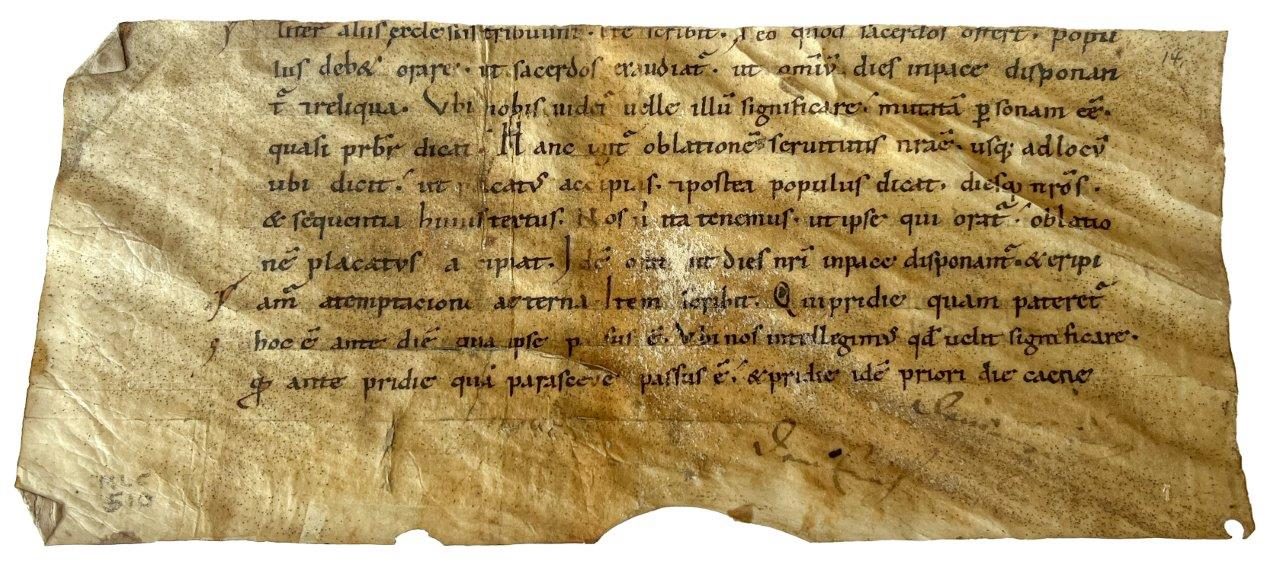
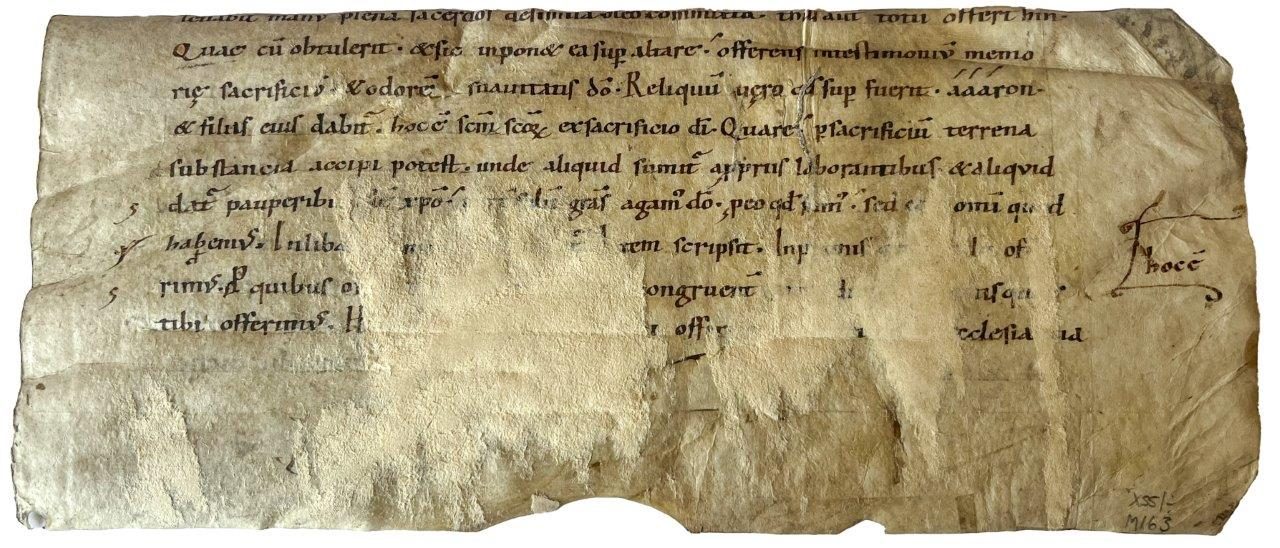
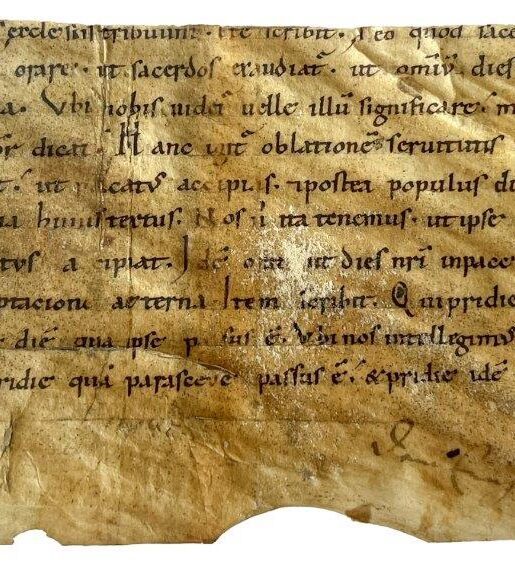
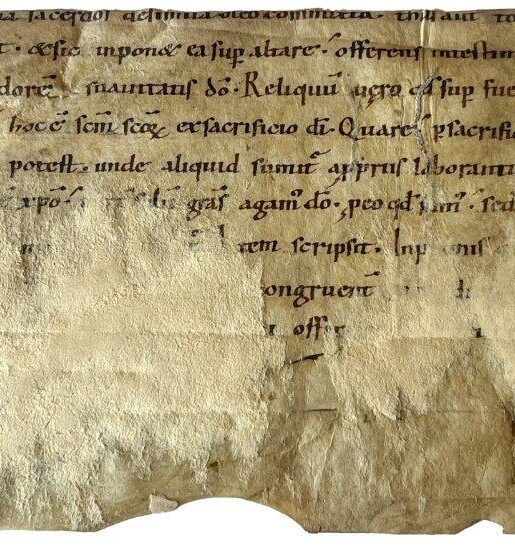
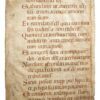
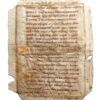
![Leaf of Passionale in Latin [Italy, 12th century, first half] Lives of St Felicity and St Clement Leaf of Passionale in Latin [Italy, 12th century, first half] Lives of St Felicity and St Clement](https://butlerrarebooks.co.uk/wp-content/uploads/2021/01/IMG_0696-515x618.jpg)
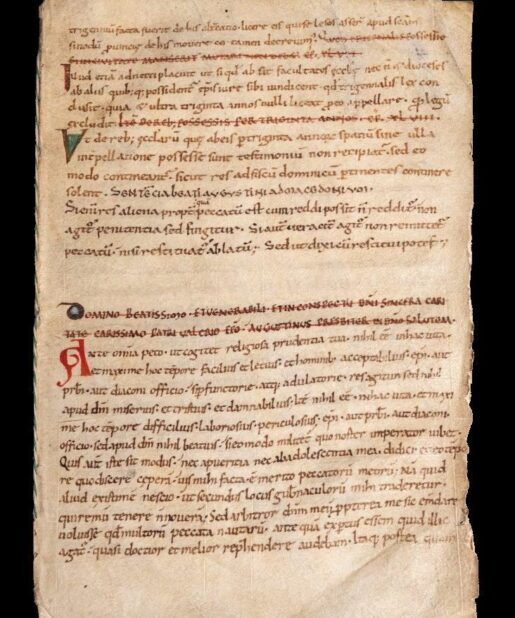
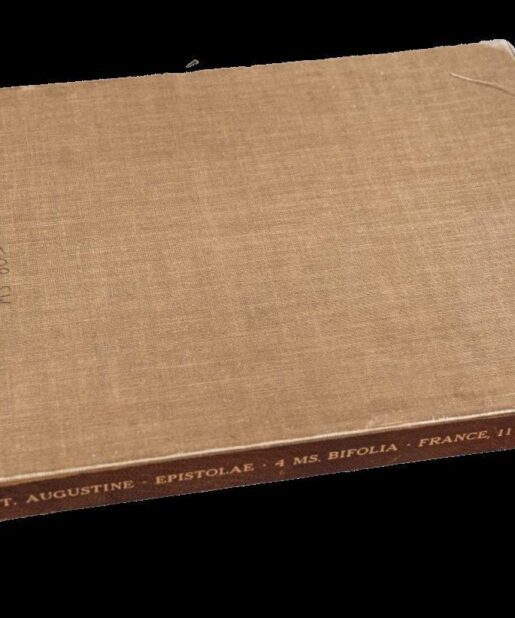
![Three fragments from Sulpicius Severus, Dialogi, in Latin, manuscript on vellum [France (Tours?), 9th century (1st half)] Three fragments from Sulpicius Severus, Dialogi, in Latin, manuscript on vellum [France (Tours?), 9th century (1st half)]](https://butlerrarebooks.co.uk/wp-content/uploads/2024/09/IMG_0275-515x618.jpg)
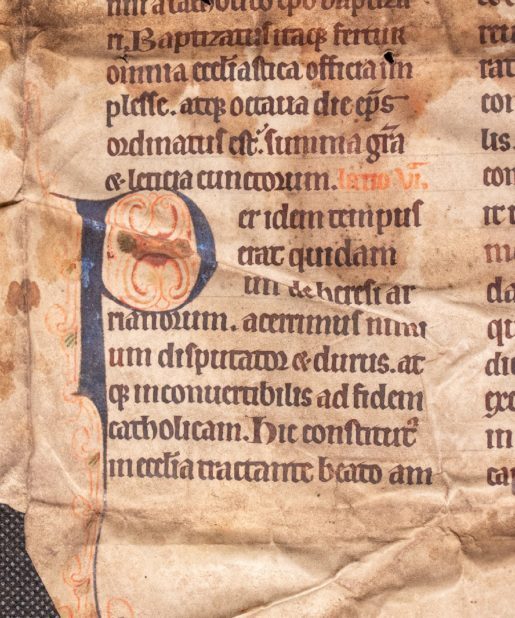
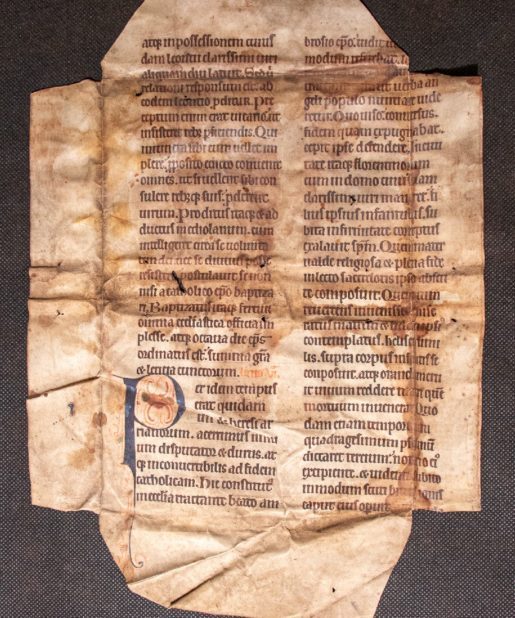
![Saints Peter and Paul, in an illuminated historiated initial ‘N’, cut from a Gradual in Latin on parchment [Italy (Florence); 15th century (c.1470s)] Saints Peter and Paul, in an illuminated historiated initial ‘N’, cut from a Gradual in Latin on parchment [Italy (Florence); 15th century (c.1470s)]](https://butlerrarebooks.co.uk/wp-content/uploads/2022/02/IMG_6782-515x618.jpg)
![Saints Peter and Paul, in an illuminated historiated initial ‘N’, cut from a Gradual in Latin on parchment [Italy (Florence); 15th century (c.1470s)] Saints Peter and Paul, in an illuminated historiated initial ‘N’, cut from a Gradual in Latin on parchment [Italy (Florence); 15th century (c.1470s)]](https://butlerrarebooks.co.uk/wp-content/uploads/2022/02/IMG_6781-515x618.jpg)
![The Model for 15th-Century Humanistic Script and Decoration – A large bifolium from a decorated Lectionary, in Latin [Italy, 12th century, first half] The Model for 15th-Century Humanistic Script and Decoration – A large bifolium from a decorated Lectionary, in Latin [Italy, 12th century, first half]](https://butlerrarebooks.co.uk/wp-content/uploads/2021/04/IMG_0688-515x618.jpg)
![The Model for 15th-Century Humanistic Script and Decoration – A large bifolium from a decorated Lectionary, in Latin [Italy, 12th century, first half] The Model for 15th-Century Humanistic Script and Decoration – A large bifolium from a decorated Lectionary, in Latin [Italy, 12th century, first half]](https://butlerrarebooks.co.uk/wp-content/uploads/2021/04/IMG_0686-515x618.jpg)
![[Pope Boniface] Leaf from Sextus Liber Decretalium – early C14th [Pope Boniface] Leaf from Sextus Liber Decretalium – early C14th](https://butlerrarebooks.co.uk/wp-content/uploads/2020/07/IMG_4329-515x618.jpg)
![[Pope Boniface] Leaf from Sextus Liber Decretalium – early C14th [Pope Boniface] Leaf from Sextus Liber Decretalium – early C14th](https://butlerrarebooks.co.uk/wp-content/uploads/2020/07/IMG_4328-515x618.jpg)
![A single leaf; Augustine’s Enarrationes in Psalmos, for Psalm 41:6-8 [manuscript] A single leaf; Augustine’s Enarrationes in Psalmos, for Psalm 41:6-8 [manuscript]](https://butlerrarebooks.co.uk/wp-content/uploads/2021/06/IMG_2115-scaled-515x618.jpg)
![A single leaf; Augustine’s Enarrationes in Psalmos, for Psalm 41:6-8 [manuscript] A single leaf; Augustine’s Enarrationes in Psalmos, for Psalm 41:6-8 [manuscript]](https://butlerrarebooks.co.uk/wp-content/uploads/2021/06/IMG_2112-scaled-515x618.jpg)
Reviews
There are no reviews yet.